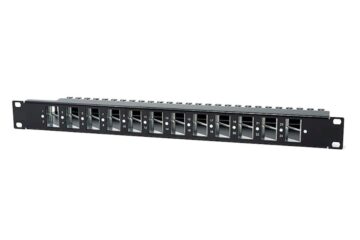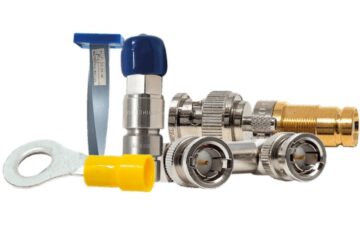
Telecom cabinets and racks are important components of telecommunication infrastructure. They provide a safe and secure environment for housing network equipment such as servers, switches, routers, and other critical components.
They provide a secure environment for network equipment, protecting it from environmental factors such as dust, moisture, and temperature fluctuations, as well as external factors such as theft and vandalism.
Telecom cabinets also enable efficient and organized cable management, which reduces the risk of cable damage and downtime, and optimizes the use of space and resources.
These ensure compliance with industry standards and regulations, which is essential for organizations that deal with sensitive or regulated data.
Types of Telecom Cabinets
There are several types of telecom cabinets available, each with its own set of features and benefits:
- Wall-mount cabinets: These cabinets are suitable for small network setups and are mounted on walls, saving floor space. They are also ideal for environments where floor mounting is not possible.
- Floor-mount cabinets: Floor-mount cabinets are larger and more robust than wall-mount cabinets and can accommodate a larger number of network devices. They are suitable for large-scale network setups and are installed on the floor.
- Outdoor cabinets: These are designed to withstand harsh outdoor environments, such as extreme temperatures, moisture, and dust. They are used for telecommunications equipment in remote areas or outdoor installations.
- Colocation cabinets: Colocation cabinets are used in data center environments and provide space for multiple clients to store their equipment in a shared space. They are available in a variety of sizes and configurations.
Characteristics of Cabinets
Telecom cabinets and racks are known for their durability, adaptability, and maintenance. They are designed to withstand the rigors of daily use and protect network equipment from environmental factors.
The cabinets should be easy to access for maintenance and repair, with removable panels and cable management systems for quick and easy access to devices. They also must be compatible with a wide range of network equipment and designed to meet the specific needs of each organization.
Additionally, telecom cabinets have to meet industry standards and regulations to ensure a safe and secure environment for network equipment. These characteristics contribute to their overall quality and effectiveness, making them an essential component of telecommunication infrastructure.

Advantages of Cabinets and Racks
Telecom cabinets and racks offer numerous advantages for telecommunication companies and organizations that rely on network equipment. Some of the most notable benefits include:
- Protection from external factors: Telecom cabinets and racks are designed to provide a secure and protected environment for network equipment. They offer protection against dust, moisture, heat, and other external factors that can damage sensitive equipment.
- Optimal use of resources: These help to optimize the use of space and resources in telecommunication facilities. They allow for efficient storage of network equipment, cables, and other components, which can help save valuable floor space and reduce clutter.
- Efficient cable management: With cabinets and racks, cables can be neatly organized and managed. This can help minimize cable clutter and make it easier to identify and fix cable-related issues.
- Enhanced security and safety: Telecom cabinets and racks provide an added layer of security and safety for network equipment. They come equipped with locking mechanisms that prevent unauthorized access and protect against theft and tampering.
- Reduced maintenance costs: These can help reduce downtime and maintenance costs by providing a stable and secure environment for network equipment. They help prevent equipment failure and damage, which can result in costly repairs and downtime.
These advantages contribute significantly to the overall quality and effectiveness of telecommunication infrastructure.
Tips for Selecting Telecom Cabinets and Racks
Selecting the right telecom cabinets and racks is essential for ensuring the quality and effectiveness of telecommunication infrastructure. Here are some tips and considerations to keep in mind when selecting telecom cabinets and racks:
- Type and size of network equipment: Consider the type and size of network equipment that will be housed in the telecom cabinets and racks. Make sure the cabinets and racks are compatible with the equipment and have enough space to accommodate it.
- Location and environment of installation: Take into consideration the location and environment where the cabinets and racks will be installed. This includes factors such as temperature, humidity, and physical security.
- Capacity and future scalability: Analyze the capacity and future scalability of the cabinets and racks. Make sure they can accommodate future growth and expansion of the telecommunication infrastructure.
- Budget and cost-effectiveness: Consider the budget and cost-effectiveness of the cabinets and racks. Compare prices and features to find the best value for money.
By keeping these tips and considerations in mind, you will be able to select the best telecom cabinets and racks for their specific needs and requirements.
Telecom cabinets and racks offer numerous advantages. By selecting the right ones, you can ensure the quality and effectiveness of your telecommunication infrastructure.
Related articles: Fiber Optic Network Construction: 5 Steps for a Successful Project









